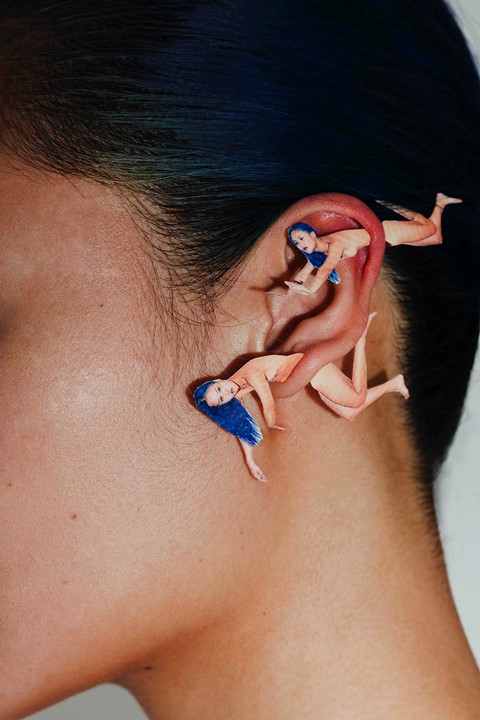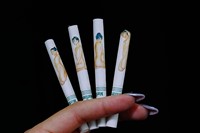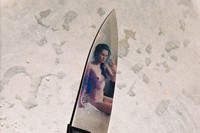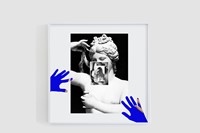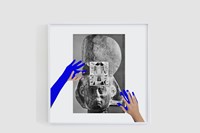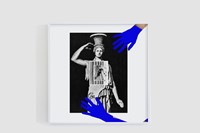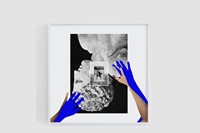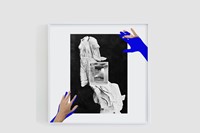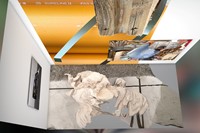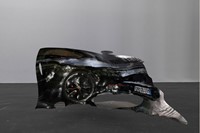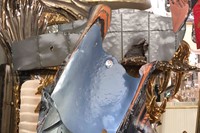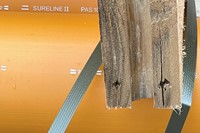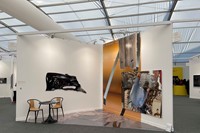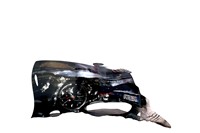The Tate Modern’s former curator of photography selects some of the most exciting emerging image-makers from this year’s Paris Photo
Curiosa was easily demarcated amongst the sprawl of the Paris Photo fair last week thanks to its innovative aesthetics and hard-to-identify techniques. The sector is dedicated to emerging artists, and was curated this year by Shoair Mavlian, director of Photoworks and former curator of photography at the Tate Modern. This year, the section spotlit four themes: new documentary, experimental, diaristic and performance (“in the legacy of Nan Goldin”), and conceptual practice. Five galleries are ascribed to each theme, although they’re often porous enough to overlap.
Mavlian wanted to provide “a snapshot of how artists are working with photography right now,” celebrating artists taking photography in a fresh direction. “[I hope] collectors really embrace supporting contemporary photography beyond just a framed print,” the curator tells AnOther. “I think we really have to move forward for the medium to progress – we need collectors to support experimental practice.” Regardless of the market, she adds that those who still gravitate towards collecting traditional things nonetheless could “get an insight into what’s going on.” Moreover, Mavlian deemed many of these 20 bodies of work affordable. (“If I didn’t just buy a ticket to go home to Australia, I could afford some,” she jokes. “It was a very expensive flight.”)
As a curator, Mavlian keeps tabs on the next generation of artists across all platforms and contexts. “I use as many research tools as possible,” she says. “If I see one or two works and want to find out more, I’ll do my research online first. That determines what kind of rabbit hole I go into.” She also emphasises the importance of scouring social media and artist websites, as well as books, monographs and zines. “If I’m lucky enough to be in the same city they’re showing in, I go see the work,” she adds. “The experience of physically seeing the work is for the better.” Due to the pandemic, she curated this edition mostly from selecting images via digital showcase. In situ, however, she was pleased: “it reaffirms that we do need physical exhibitions and art fairs and festivals – so we can interact.” Here, she talks through three of her choices.
John Yuyi at Over the Influence
“I was drawn to this because I’m a big fan of Juno Calypso, and this has a lot of connections to Juno’s work – but is also independent and different in many ways. John Yuyi was born in Taiwan, and lives between Taipei and New York. A lot of her work is self-portraiture using her own body. Her work challenges the position of the female nude in the history of photography. She comes from this post-internet generation, growing up with an influx of readily-available images online. She crosses into this Surreal world, in which she puts images of herself onto her own body. The self-portrait on the contact lens on her finger is this layering of the self on top of the self. She takes it from the body to inanimate objects: lipstick, cigarettes … she’s done a whole series where she’s put photographs onto raw meat, like pork skin. She’s also done temporary tattoos. It’s a mix of thinking of the body as a canvas, about presenting the body in different ways. She also had a viral series a couple of years ago where she took naked self-portraits in the toilets of aeroplanes, covering up bits of her body with toilet seat coverings. She was bored on a long-haul flight, and then it became something quite comical, and very popular on social media.”
Ira Lombardia at Alarcon Criado Gallery
“This is one of my favourite discoveries. She’s Spanish, living in the USA. She stopped ‘taking’ photographs ten years ago as a reaction against photography; now she uses archives. The big images at the back are from the Warburg Institute in London. Warburg was one of the first curators to catalogue objects from history of art and antiquities using thousands of photographs of ancient things. The middle images are from the post-war archive of Harry Shunk and János Kender – two photographers who documented lots of performance and conceptual art in the 60s, 70s and 80s. The small images on top are found on the internet. When you put them altogether, it’s like you’re compressing and layering time and space in one image. The blue is her hands inserting herself into the work.
“She also created an app: If you scan the blue section of the photographs, it tells you to pick an image from your phone – like a picture of your cat – and then replaces the blue with that image like a projector, giving the audience the power to change the work. You get to be a part of the process, using technology to change the way you can experience art.”
Victoria Pidust at Galerie Andreae
“Victoria Pidust is Ukrainian, born in 1992. Lots of the photographers in Curiosa are born in the 90s. She has a background in painting, and she does photography but … non-photography. Her work takes 2D photographic images and puts them into 3D imaging software: the same type that architects use. The software tries to reinterpret the 2D space as a 3D space. The way the software ‘reads’ the image, you get these weird distortions and glitches. It no longer has the rectangular frame of a photograph. It becomes this melting morph. She’s totally breaking out of the frame on the wall and on the floor. Every piece is independent – on Dibond, or as a wall piece for which the dimensions are measured and the artist has to create a new simulation. But combined, they’re an installation. She uses these different levels: analogue, virtual, digital … overlapping of realities. You only recognise the details of the photos when you are in front of the work; otherwise, you recognise nothing.”
